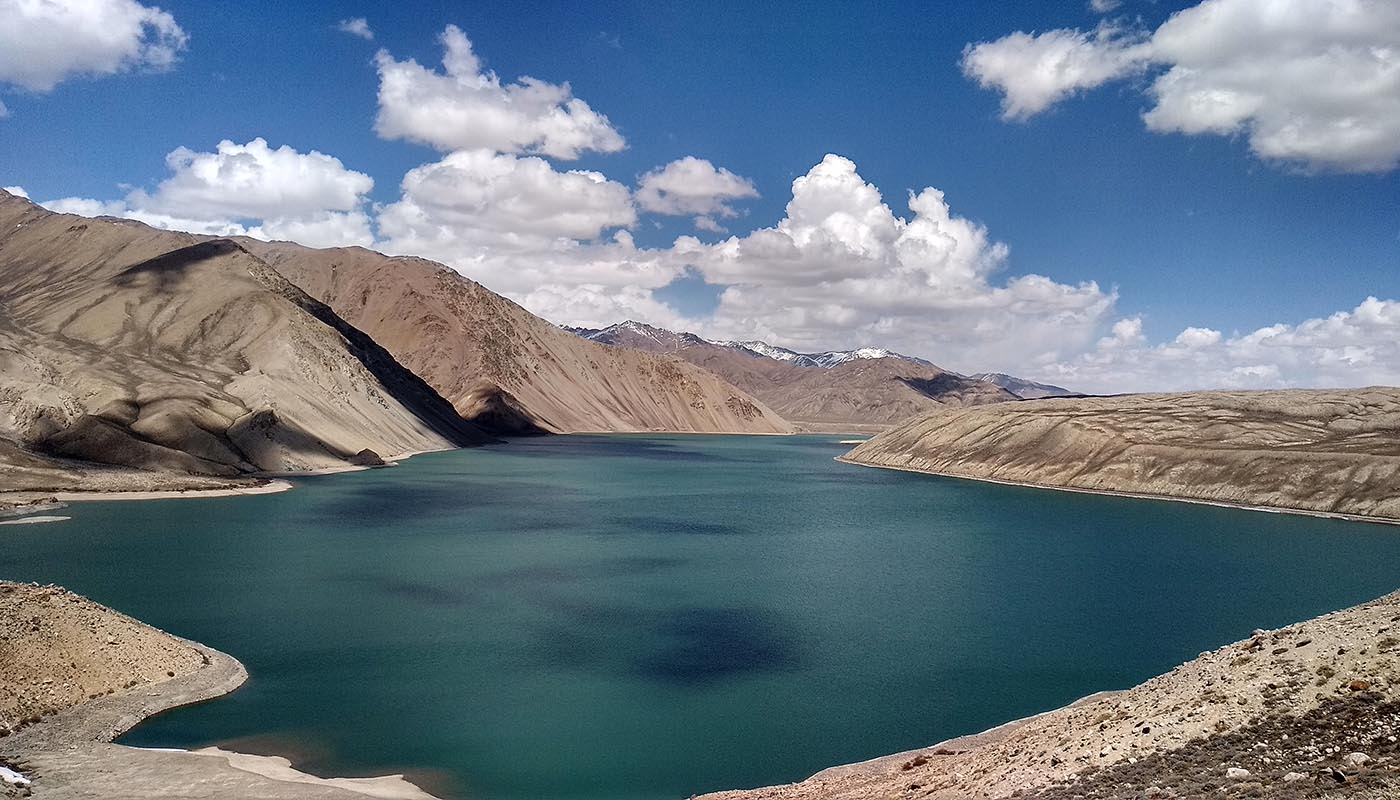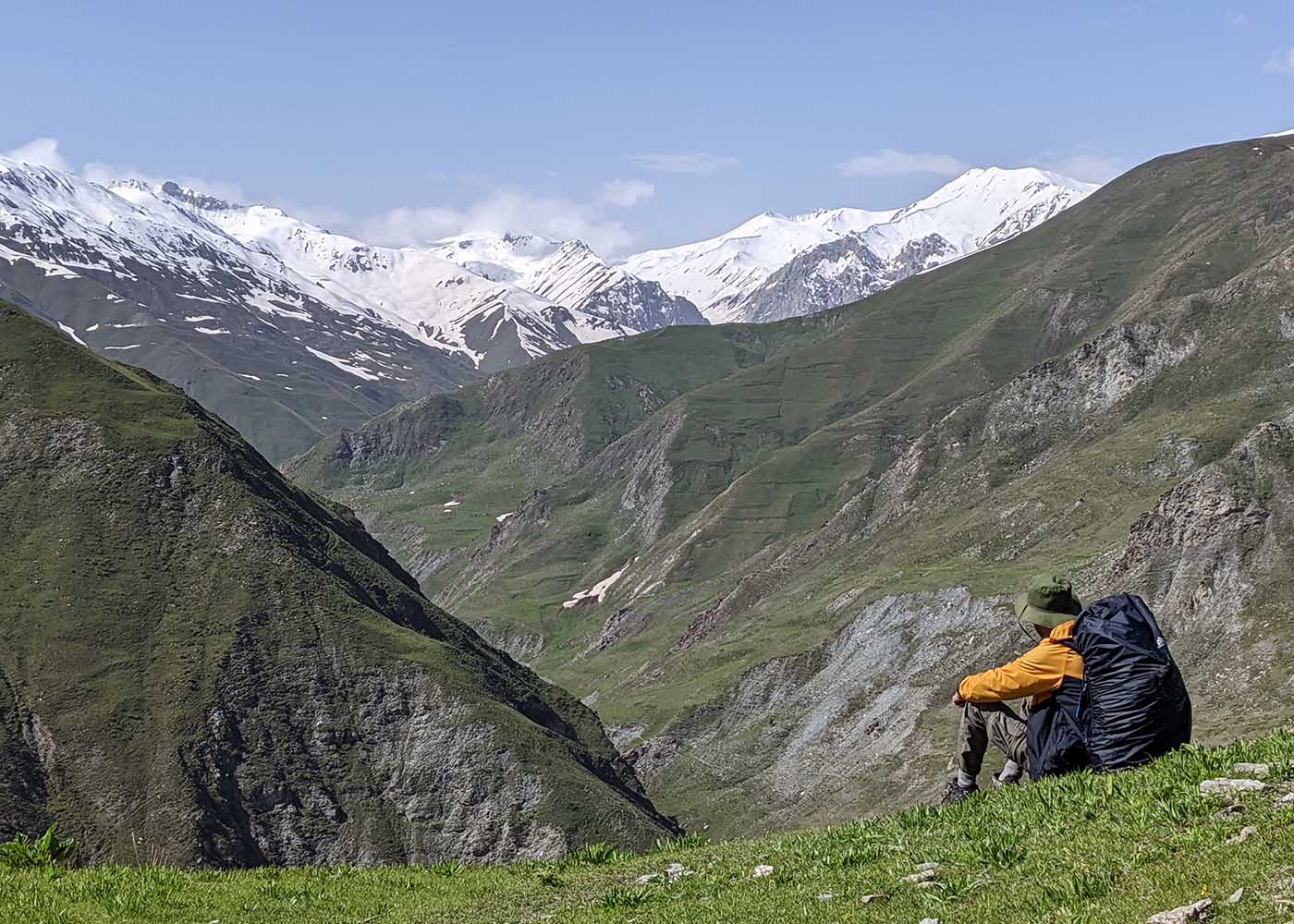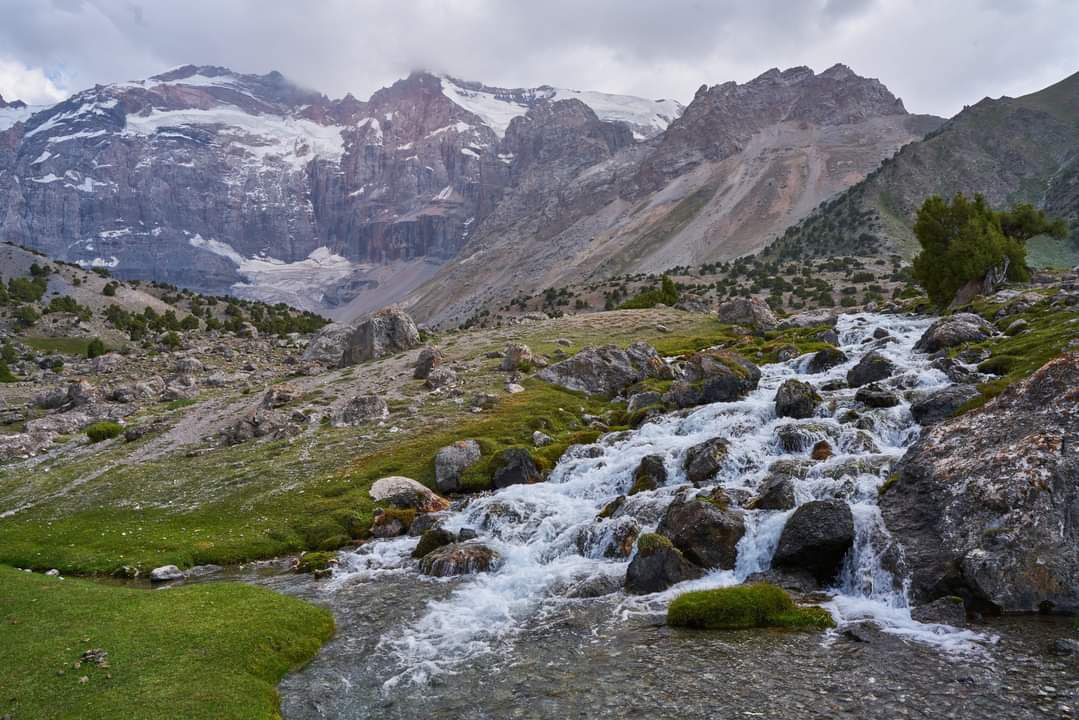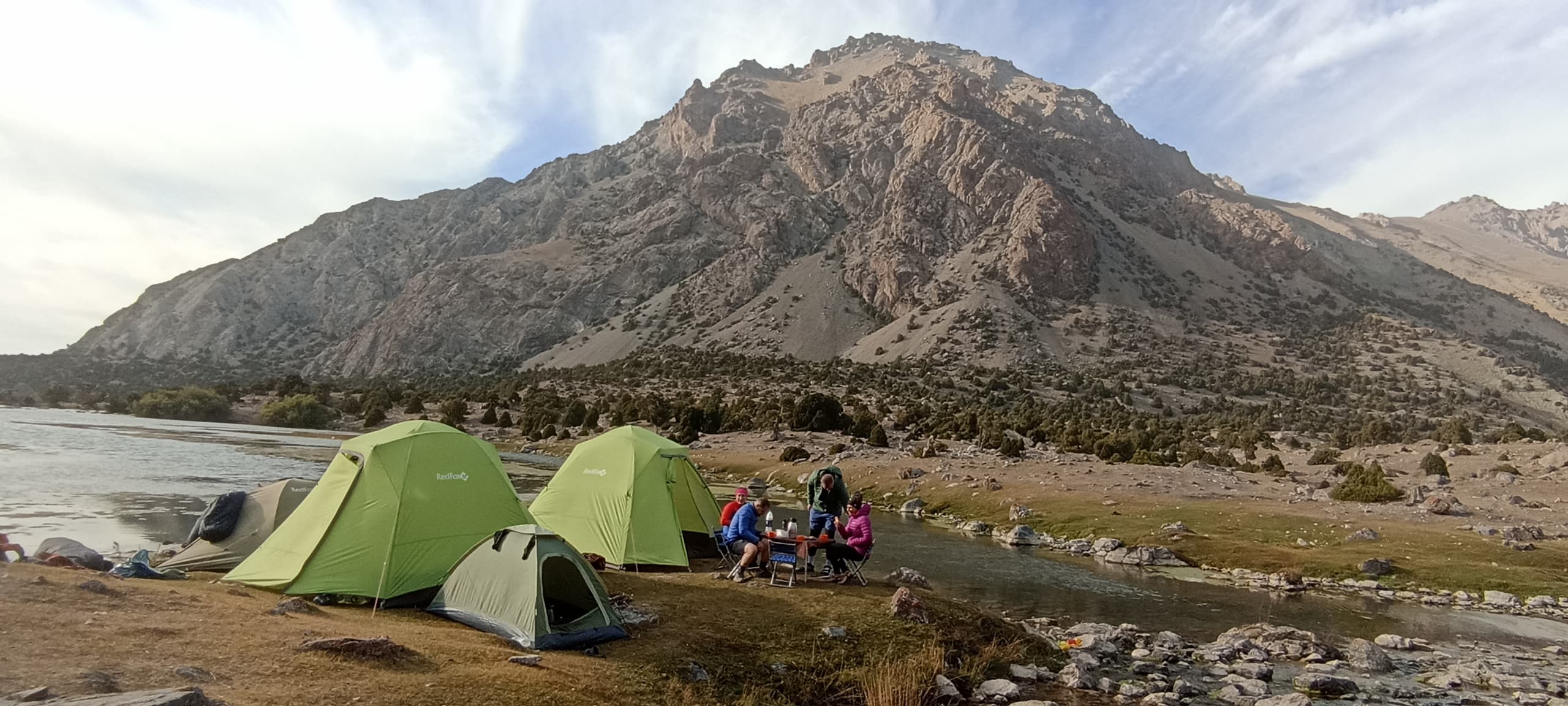Fequently Asked Questions
Find here a selection of frequently asked questions to take away doubts that you may have. The questions also give an idea of what to expect when trekking with us. Do not hesitate to contact us directly if you do not find the question you are looking for.
Equipment
We can provide tents and down sleeping bags for a small additional fee. Sleeping bag liners and air mattresses are also available. The equipment is intended for high-altitude hikes. That is strong, but light. Lightweight gear is vital, as everything must be carried in a backpack all the way.
The tents offered by us have a width of about 1.3 m, a weight of 1.7 kg and a packed volume of 5 liters. Down sleeping bags have a temperature limit of 0˚C. Even in summer at campsites at altitudes over 3000 meters, it is recommended to use a warm sleeping bag. Sleeping bags weigh about 1000 grams and have a volume of 8 liters when packed. The mattresses come in a 2.5L compression bag, weigh 600g and can be inflated by mouth.
Needless to say, you can always bring your own equipment as well.
We provide all food, kitchen equipment, first aid supplies and water filters/cleaning tablets. All this is included in the prices advertised on the site, as well as all overnight stays in families and all transport.
As hiking trips are long and often difficult, it is recommended to bring sturdy shoes and comfortable clothing. You are also advised to bring a raincoat and a set of warm clothes, as temperatures can drop significantly at night. Also consider bringing an external battery with you to charge your electronic devices. A complete packing list can be found on the practical information page. Take only the essentials with you to limit the weight you have to carry.
We recommend bringing a backpack with a capacity of at least 70 liters. A comfortable backpack is of great importance. It is important that you have enough space in your backpack to carry some food and general kitchen equipment. Try to have at least 12 liters of free space for this. When renting equipment, you must reserve 5 liters for a tent and 10 liters for a sleeping bag and an air mattress.
You don’t have to take money with you during the hike as it’s all inclusive. However, you can take some cash with you.What kind of weather should I prepare for?
Tajikistan has a land climate with hot summers and cold winters. The hiking season is in the summer and lasts from May to September, when the temperatures are at their most pleasant. During the summer in the mountains, daytime temperatures typically range from 15 to 25°C. At altitudes above 3,000 meters, temperature fluctuations during the day are significant. At night, the temperature can even drop below zero. The first snow may start to fall towards the end of the tourist season in September.
Precipitation in Tajikistan varies throughout the year. There is almost no precipitation in summer and early autumn. Precipitation is more frequent during the rest of the year, with the most precipitation occurring in early spring. Good waterproof clothing is a must when hiking outside of the main tourist season in the summer, especially in the mountains north of Dushanbe, including the Fann Mountains and the Zerafshan Range. The Pamir Mountains are drier, with relatively little rainfall throughout the year.
During the trek
You are joined by one English-speaking Tajik head guide from the start in Dushanbe until returning. The mountain guide is knowledgeable and arranges all transport and accommodation. For large groups, there are additional guides for support. Normally there is one guide for every 4-5 participants. There are no porters or cooks by default. Pack donkeys or porters can be hired on the spot at some places, if desired.
Apart from your clothing and other personal items, you are required to carry your own camping equipment (~3.5 kg). In addition, you need to carry a share of the group’s food and cooking equipment. The amount of food depends largely on the length of the trek and the amount of nights spent in homestays, where food is included.
Try your best to limit the weight of your personal belongings as much as possible. We recommend that your personal items and clothing altogether weigh no more than 7 kg. Any more weight usually means that you are bringing unnecessary things. Every gram counts on the steep trails in Tajikistan. Be selective and you will thank yourself later! Also try to take small travel packaging as much as possible – for example, do not bring a 0.5 L bottle of sunscreen while 50-100 mL is sufficient.
In general, you can expect starting off a trek carrying a backpack weighing around 16 kg. As the trek progresses, the weight gradually decreases as the food is being consumed.
As hiking trips are long and often difficult, it is recommended to bring sturdy shoes and comfortable clothing. You are also advised to bring a raincoat and a set of warm clothes, as temperatures can drop significantly at night. Also consider bringing an external battery with you to charge your electronic devices. A complete packing list can be found on the practical information page. Take only the essentials with you to limit the weight you have to carry.
We recommend bringing a backpack with a capacity of at least 70 liters. A comfortable backpack is of great importance. It is important that you have enough space in your backpack to carry some food and general kitchen equipment. Try to have at least 12 liters of free space for this. When renting equipment, you must reserve 5 liters for a tent and 10 liters for a sleeping bag and an air mattress.
You don’t have to take money with you during the hike as it’s all inclusive. However, you can take some cash with you.What kind of weather should I prepare for?
Every day, breakfast and dinner are provided as well as additional snacks during the day for an energy boost. When camping, we have to be self-sufficient and prepare our own meals on an outdoor gas stove. You can expect mostly rice and pasta dishes. The food can be adapted to your dietary needs/intolerances or preferences. Food in homestays is more sophisticated and you can enjoy authentic Tajik dishes.
Drinking enough water is important when trekking. We take water from mountain streams to refill bottles and use water filters or purification tablets to make it safe to drink. The water filters and purification tablets are provided.
Vendors or small shops are available during some of the treks to buy extras.
Tourist infrastructure in Tajikistan is limited – nights are spent either in tents or in homestay accommodations, which are run by local people. Wherever homestay accommodation is not available, the night needs to be spent in tents and equipment must be carried along during the entire trekking, in addition to the food for dinner and breakfast. Homestay accommodations mostly come with meals included. For this reason, the amount of food – and thus weight – to be carried is higher when you choose to go camping a lot.
Homestays are available in most of the villages in the Tajik mountains. Staying in homestays makes for more comfortable nights and also brings you in closer touch with the local culture. In addition, it allows you to enjoy the local dishes prepared the traditional way.
The experience of staying in tents in the middle of nature is unique in its kind, despite of the extra challenges that it poses. Especially at altitudes above 3000 meters, spending the night outside in a tent can be icy cold. Staying in tents is always an option. Wild camping is allowed everywhere, also in the more densely populated parts of the mountains. Opting for overnight in tents also reduces costs.
You’ll be out in the wild and mostly out of reach of mobile and internet networks. Make sure your relatives know about your plans before leaving.
Logistics
Treks usually depart from Dushanbe in the morning. Return at the end of the trek is mostly in the afternoon. Nevertheless, we are flexible to adapt to your schedule. You can let us know your desired place for pick-up and drop-off anywhere in Dushanbe. Check the itinerary on the relevant trek page for precise details as these may differ per trek. Alternative pick-up or drop-off locations are sometimes possible, but need to be agreed upon before booking.
If your flight arrives in the early morning, you can book on the start day of the trek and be picked up at the airport. It might be preferable though to arrive a day or two earlier to fully recover from the flight. This also gives you time to explore Dushanbe on your own.
Return in Dushanbe at the end of the trek is usually in the late afternoon. For the return flight, we recommend building in a margin of at least one day to account for possible delays due to unforeseen circumstances on the way back or during the trek.
Private cars are used for transport to the start of the trek and back to Dushanbe. Organized long-distance public transport to the mountainous areas unfortunately does not exist in Tajikistan.
Needless to say, you do not want to carry stuff with you that you don’t need. Think about flight bags, leisure clothes and souvenirs. All of this can be left and stored in a safe place in Dushanbe and picked up again after finishing the trek.
Booking
Treks can be booked via the booking form that can be accessed through the respective trek pages. If none of the treks on the website meet your wishes, you can also fill out the custom trek form to request information and suggestions for a tailor-made trip. Alternatively, you can always contact us directly via e-mail or the contact form to plan a trek.
To secure a booking, a deposit payment of 15% of the total amount should be fulfilled. There is the possibility to pay securely online by credit card. Otherwise, you can also opt for paying via a direct bank transfer.
The remaining amount can be payed at any moment before the start of the trek. This payment can be fulfilled online by credit card, via a direct bank transfer or alternatively in cash after arriving in Tajikistan.
Amounts are collected in EUR. Prices shown in USD are estimates based on the current exchange rate. The exchange rate may have changed at the time of payment.
Beside the prices advertised on the website, you will not need to pay any unexpected extras before, during or after the trek. You do not even necessarily have to bring any money during the trek. Only if you want to make use of a donkey to carry equipment, you have to pay extra for these costs.
We can keep prices low because you directly deal with us when booking through the website. There is no intermediary taking a commission.
We do not impose any a priori age limits. Anyone can join, as long as you consider yourself fit enough. We do emphasize that young children and elderly people are generally not suited for this kind of extreme trekking trips. Check our grading system to get an idea of what physical challenges to expect.
The main trekking season in Tajikistan runs from May to September. Trekking in most of Tajikistan is not possible all year round due to the great altitude of most hiking routes. Outside the main season, the conditions can be icy cold with trails being covered by lots of snow. At the greatest altitudes in the Pamir Mountains (> 4000 meters), snow may complicate trekking even all the way until the end of June. A positive side is that there are no rain seasons that you need to take into account like in many other trekking destinations around the world.
Tajikistan
A tourist visa can be arranged fully online for passport holders of most countries for a fee of $30 on www.evisa.tj. An additional permit is required when visiting the Pamir Mountains in the Gorno-Badakhshan Autonomous Oblast (GBAO). This permit can be selected during the online application procedure for an extra $20.
For more details, visit our dedicated page on the visa requirements.
The international airport of Dushanbe is relatively small with limited flight connections. Direct flight connections are operated from Istanbul, Dubai and various cities in Russia.
Tajikistan is overall a safe country to visit. Even at nighttime, it is safe to walk on the street. It is highly rare that tourists are targeted for robbery. The border zone in the south can be considered somewhat dangerous due to the proximity of Afghanistan and clandestine drug trafficking. Border zones with Uzbekistan in the northwest pose some danger with respect to landmines. In any case, all treks stay far away from any potentially dangerous border zone. Terrorism risks are not higher compared to European countries. Tajikistan was shaken by a terrorist attack in 2018, killing four cycling tourists south of Dushanbe. This tragedy was a rather stand-alone incident though, and the terrorism risk can be considered low. Minor risks related to traveling in basically any country also exist in Tajikistan (pickpocketing etc.).
One of the main differences is the altitude. In the Fann Mountains, you are trekking most of the time at altitudes between 2000 and 3500 meters. In the Pamir Mountains, you find yourself mostly at altitudes of 3000 to 4500 meters. As a result, the Fann Mountains have more vegetation, while the Pamir Mountains have a rougher character. Furthermore, the Pamir Mountains are less densely populated with less villages and homestay accommodations along the trails. The remoteness of the Pamir Mountains also makes for longer traveling from Dushanbe. A full day to one and a half day is required to reach the start of treks (passing through great landscapes along the way). The Fann Mountains are within much closer reach – only a few hours of driving are needed to get to the start of the treks.
You can read more on the general information pages of the Pamir Mountains and the Fann Mountains.
Tajikistan has a continental and relatively arid climate. The capital Dushanbe at 800 meters altitude has very hot and dry summers, while temperatures drop below the freezing point in the winter. Temperatures are considerably lower at greater altitudes in the mountains. You can expect day-time temperatures around 20-25˚C in the summer months. Rainfall is low throughout the year across the country. Altogether, the trekking conditions are ideal throughout the summer.
Among the wildlife that can be encountered in Tajikistan are snow leopards, brown bears, wolves and grazers like Marco Polo sheep (endemic to the Pamirs) and markhor, which are a goat species with large screw horns. Spotting a snow leopard is rare as the population is limited to only a few hundred living in the Pamir Mountains.
Featured Treks
Not sure which trek to choose?
Let us know about your wishes to design a tailor-made trip











